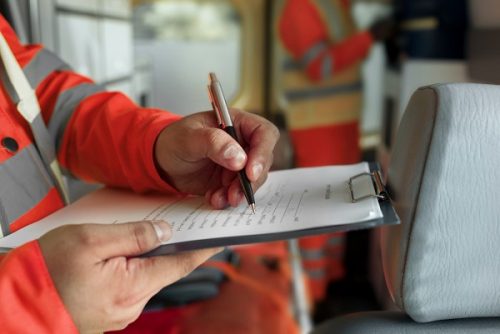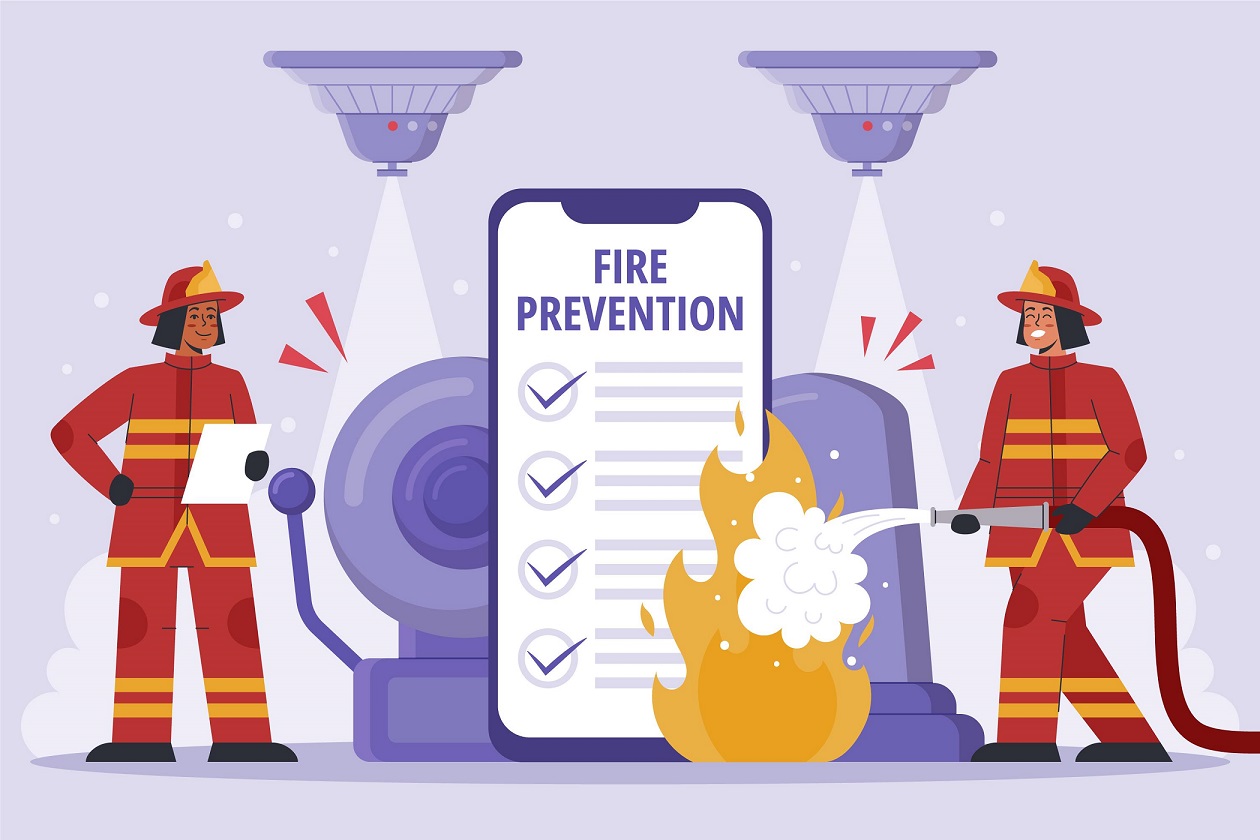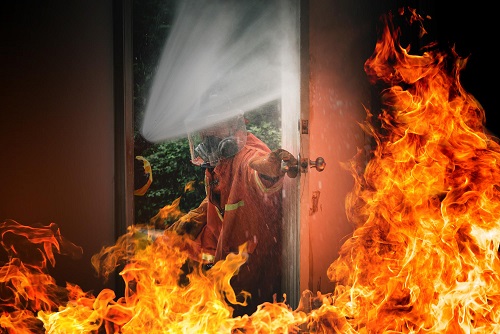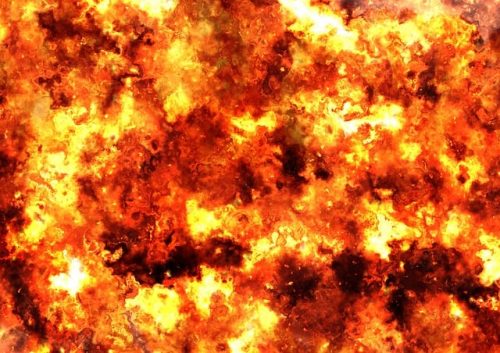
Fire Risk Assessment: Safeguarding Lives and Properties
Fires pose a significant threat to both lives and property, and a lack of preparedness often exacerbates their devastating impact.
The Importance of Fire Risk Assessment in Safeguarding Environments
Fire Risk Assessment (FRA) is pivotal in identifying, evaluating, and managing potential fire hazards within various environments to mitigate this risk. A thorough FRA is crucial to safeguard occupants and prevent the severe consequences of uncontrolled fires, whether applied to a workplace, residential structure, or public facility.
The Cornerstone of Fire Safety
At the heart of every successful fire safety plan is the Fire Risk Assessment.
This process involves systematically examining buildings or premises to pinpoint potential fire hazards, evaluate the associated risks, and implement measures to control and minimise these risks. The ultimate aim extends beyond mere regulatory compliance; it focuses on protecting lives and property.
Identifying Fire Hazards with a Fire Risk Assessment
The initial step in the FRA process is the identification of potential fire hazards. This includes recognising ignition sources, combustible materials, and other factors contributing to the outbreak and spread of fires. From faulty electrical equipment to flammable substances, a comprehensive examination helps highlight areas of concern.
Assessing People at Risk:
Beyond the physical environment, FRA emphasises the individuals within it. Assessing the vulnerability of occupants, encompassing employees, visitors, and those with special needs, ensures that evacuation plans are tailored to specific requirements. This inclusivity proves vital for crafting a comprehensive and effective fire safety strategy.
Evaluating Risks and Implementing Control Measures
Once hazards are identified, the subsequent step involves evaluating associated risks. This evaluation considers the likelihood of a fire and its potential consequences. Subsequently, control measures are implemented, from installing fire suppression systems to enforcing stringent protocols for storing flammable materials.
Emergency Planning and Communication
A well-prepared emergency evacuation plan is a cornerstone of fire safety. Precise outlines of escape routes, assembly points, and communication strategies ensure a swift and organised response in a fire. Regular drills and training sessions contribute to heightened awareness and preparedness among occupants.
Continuous Review and Compliance
Recognising that fire safety is a dynamic process, regular reviews of the FRA are essential for maintaining relevance. This includes updating the assessment based on environmental changes, occupancy, or fire safety measures. Compliance with local regulations and standards is not merely a legal requirement but a fundamental aspect of sustaining a safe environment.
Continuous Improvement and External Insights
The commitment to fire safety doesn’t conclude with the initial assessment. Emphasising continuous improvement is crucial for adapting to emerging risks and technologies. In complex or high-risk environments, seeking external expertise from fire safety professionals can provide valuable insights and recommendations.
Fire Risk Assessment transcends a mere regulatory obligation; it is a proactive and indispensable component of any comprehensive fire safety strategy. By systematically identifying and mitigating potential fire hazards, assessing the vulnerability of occupants, and implementing effective control measures, the FRA plays a vital role in safeguarding lives and property. It is a collective responsibility to prioritise fire safety.
Exploring the Invaluable Benefits of Fire Risk Assessment
Early Hazard Identification:
The primary benefit of an FRA is its ability to identify potential fire hazards at an early stage. By systematically examining the environment, the assessment pinpoints ignition sources, combustible materials, and other factors that could lead to a fire. This early identification sets the stage for proactive risk mitigation.
Tailored Risk Mitigation:
No two environments are the same, and neither are their fire risks. The FRA allows for the customisation of risk mitigation measures. It provides a tailored approach to eliminating or reducing identified risks, ensuring that the strategies employed are specific to the unique characteristics of a particular setting.
Enhanced Occupant Safety:
A critical aspect of fire safety is protecting individuals within a space. The FRA focuses on assessing the vulnerability of occupants, including employees, visitors, and those with special needs. This emphasis results in developing effective emergency evacuation plans and safety protocols, ultimately enhancing overall occupant safety.
Efficient Emergency Preparedness:
Preparation is critical in emergencies. The FRA contributes significantly to emergency preparedness by streamlining evacuation plans and communication strategies. This efficiency ensures that occupants respond swiftly in a fire, and organisations can coordinate a well-organised and effective emergency response.
Regulatory Compliance:
Compliance with fire safety regulations and standards extends beyond a legal obligation; it represents a fundamental pillar of responsible governance. Executing a Fire Risk Assessment (FRA) ensures that organisations adhere to local fire safety regulations, steering clear of legal repercussions and actively fostering a more secure working or living environment.
Asset Protection:
Beyond safeguarding lives, the FRA protects property and valuable assets. By addressing potential fire hazards, organisations minimise the risk of property damage. This not only preserves physical assets but also reduces the financial impact of potential fire incidents.

Continuous Improvement:
Fire safety is a dynamic process, and the FRA acknowledges this by allowing for regular reviews and updates. This continuous improvement ensures that fire safety measures remain practical and relevant, adapting to changing circumstances and emerging risks.
Cost Savings:
Implementing effective fire safety measures identified through the FRA can lead to tangible cost savings. These savings may manifest as reduced insurance premiums and mitigated financial losses associated with fire incidents.
Stakeholder Confidence:
Building and maintaining trust among stakeholders is paramount. A commitment to fire safety through a thorough FRA instils confidence in employees, residents, and other stakeholders. It fosters a sense of security within the environment, contributing to a positive and trusting organisational culture.
Preventive Approach:
The most overarching benefit of the FRA is its preventive approach. Organisations and individuals adopt a proactive stance toward fire safety by identifying and mitigating potential fire hazards before incidents occur, preventing harm and promoting a safety culture.
In conclusion, the Benefits of Fire Risk Assessment extend beyond regulatory compliance. They encompass protecting lives, property, and the overall well-being of individuals and organisations. Through early hazard identification, tailored risk mitigation, and continuous improvement, the FRA is an indispensable tool in creating resilient environments in the face of fire-related risks. It’s not just a process; it’s a commitment to safety and a safeguard against the unpredictable nature of fires.
Fulfilling Your Duty: The Imperative of Fire Risk Assessment in Business
If you're a business owner, conducting a Fire Risk Assessment (FRA) isn't merely a bureaucratic obligation; it's a legal imperative rooted in genuine care for the well-being of everyone within your establishment.

Legal Mandate: A Guardian for Business Owners
In British law, anyone responsible for managing a business—whether a shop, a building, or a factory—is legally required to evaluate the potential fire risks on their premises. The Regulatory Reform (Fire Safety) Order 2005 says that every responsible individual must conduct a fire risk assessment in any building with five or more occupants.
The Weight of Responsibility: Owners as Guardians of Safety
Business owners may need to fully grasp the extent to which the law considers them guardians of safety. In the event of an unforeseen and devastating fire, the responsibility for the well-being of individuals within their establishment rests squarely on their shoulders. Recognising this responsibility is vital, as neglecting fire safety measures could lead to immeasurable losses after a catastrophic incident.
Evolution from Fire Certificates to Fire Risk Assessments
Traditionally, fire certificates issued by fire authorities were the norm. However, the contemporary approach has shifted towards a more proactive and comprehensive tool – the Fire Risk Assessment. This assessment, mandated by law, replaces the antiquated fire certificates and demands a deeper understanding of potential fire risks within a business setting.

Evolution from Fire Certificates to Fire Risk Assessments
The journey from fire certificates to Fire Risk Assessments signifies a paradigm shift in fire safety governance. Business owners are not just entrepreneurs but stewards of safety, entrusted with the well-being of those who inhabit their spaces. Embracing the legal mandate of fire risk assessment is not merely compliance but a commitment to creating environments resilient to the unpredictable nature of fires, ensuring that every business venture stands as a bastion of safety and responsibility.
Navigating the Landscape: The Role of Competent Providers
While the law permits individuals to conduct fire risk assessments, the complexity of modern business environments often necessitates expertise. Employing the services of a certified and competent provider endorsed by a third party ensures a thorough examination of potential risks. These specialists can identify hazards that may go unnoticed, providing invaluable insights into creating a safer working or living environment.
Understanding the Risks: A Business Imperative
The essence of fire risk assessment lies in meeting legal obligations and understanding and mitigating risks that could jeopardise lives and property. Awareness of potential fire hazards becomes an indispensable part of a business’s overall strategy, emphasising the need for proactive measures and preparedness.
Are You in Peril?
The Legal Mandate: Regulatory Reform (Fire Safety) Order 2005
In alignment with the Regulatory Reform (Fire Safety) Order 2005, a critical requirement exists for a fire risk assessment in any building accommodating five or more occupants. This legal mandate underscores the importance of proactive measures to preserve individuals’ safety and property.
As the onus falls on landlords, employers, property owners, or managing agents, prioritising this responsibility becomes not just a necessity but a fundamental commitment to safety.
Our Commitment to Excellence: Certified Risk Assessors
At our forefront is a team of qualified risk assessors dedicated to upholding the highest standards. Our assessments go beyond mere compliance; they provide an honest and thorough evaluation of your property’s fire safety measures. We understand the value of our clients, and our commitment to excellence is reflected in every assessment we conduct.

Empowering Your Safety: Taking Charge with Fire Risk Assessments
In property management, the unseen threat of fire can pose substantial risks. A thorough Fire Risk Assessment (FRA) is the key to mitigating these dangers. Yet, the power to control and reduce these risks ultimately rests in the hands of the responsible person.
Understanding the Assessment Process: Knowledge is Power
Upon meticulously examining your premises, a competent person, often a certified fire safety professional, delves into the intricacies of potential fire risks. This assessment goes beyond identifying hazards; it provides a comprehensive understanding of the dangers lurking within your space.
Determining Required Actions: Informed Decision-Making
Armed with insights gained during the assessment, the competent person will outline the necessary actions to bolster your fire safety measures. Whether addressing specific risks, ensuring compliance with British Standards (BS5839:2013), or preparing for official inspections, you’ll receive clear guidance on the steps needed to enhance your fire protection.
The Power of Compliance: Meeting British Standards
British Standards, such as BS5839:2013, serve as benchmarks for fire safety. A competent person ensures adherence to these standards, providing confidence that your property is safe and aligns with the established industry norms. This compliance is not just a checkbox; it’s a commitment to the highest safety standards.

The Decision-Making Power: Responsibility in Your Hands
The Power of Informed Choices: Your Responsibility Fire protection is not just about compliance; it’s about making informed decisions to prioritise safety. A competent person will guide you, but the final call is yours. This isn’t just about meeting regulations- it’s about taking responsibility for reducing danger and maintaining control.
Empowering Safety: Your Role as a Responsible Person
As the responsible person, you hold the reins in deciding the course of action. You’re not just fulfilling a legal obligation; you’re taking charge of the safety of your premises and the well-being of those within. This decision-making power is a responsibility that underscores your commitment to creating a secure environment.
Taking the Helm in Fire Safety
In the journey of fire safety, a Fire Risk Assessment is not just a routine procedure; it’s an empowering tool that equips you with the knowledge to make informed decisions.
Your role as an accountable individual goes beyond mere adherence to regulations; it involves actively managing the risks to ensure the safety of your property and the people in it. Through this empowerment, you assume the role of a protector for your space, guiding it towards a safer and more secure future.
The Insightful Journey of a Risk Assessment: What You'll Learn
During a risk assessment, our specialists guide you through a journey of awareness regarding potential fire risks within your premises. You’ll gain invaluable insights into critical aspects:

Protection of Individuals: Identifying potential risks to the safety of occupants.
Fire Causes: Understanding what could lead to a fire within your property.
Emergency Measures: Evaluating the adequacy of measures in case of a fire incident.
Staff Firefighting Knowledge: Assessing the level of firefighting knowledge among your staff.
Fire Extinguisher Placement: Ensuring you have adequate fire extinguishers correctly positioned.
Escape Route Suitability: Verifying the suitability of escape routes.
Fire Alarm Effectiveness: Assessing the suitability and placement of fire alarms.
Handling Hazardous Materials: Identifying and managing hazardous materials.
Correct Material Storage: Ensuring materials are stored correctly.
High-Risk Area Protection: Verifying the presence of appropriate detection systems in high-risk areas.
The Strategic Value of Comprehensive Fire Risk Assessments for Property Owners
We aim to enhance your fire safety preparedness by addressing these vital aspects. A fire risk assessment is not just a legal requirement; it is an investment in the well-being of occupants and property protection. As you navigate the responsibilities associated with property ownership, let a comprehensive fire risk assessment be the cornerstone of your commitment to safety and security.
Elevate your organisation's fire safety with our expert guidance!
Following a meticulous assessment of fire risks within your premises, our competent specialists stand ready to provide a personalised action plan tailored to fortify your fire protection measures. Ensure your compliance with the latest British Standards BS5839:2013 and prepare for inspections by authorities with our comprehensive compliance check. If your premises lack fire protection, our experts will empower you with the necessary steps to enhance safety. As the responsible decision-maker, you are vital to reducing danger and securing your environment. Seize control and prioritise safety – schedule a consultation to initiate proactive measures for a safer, fully protected workplace. Let’s build a fire-protected future together!
Aarhus Fire Protection: Your trusted partner for Fire Risk Assessment
Your organisation’s safety is non-negotiable. Take the lead in fostering a secure workplace by making informed decisions today.
Contact Us for a Comprehensive Consultation
